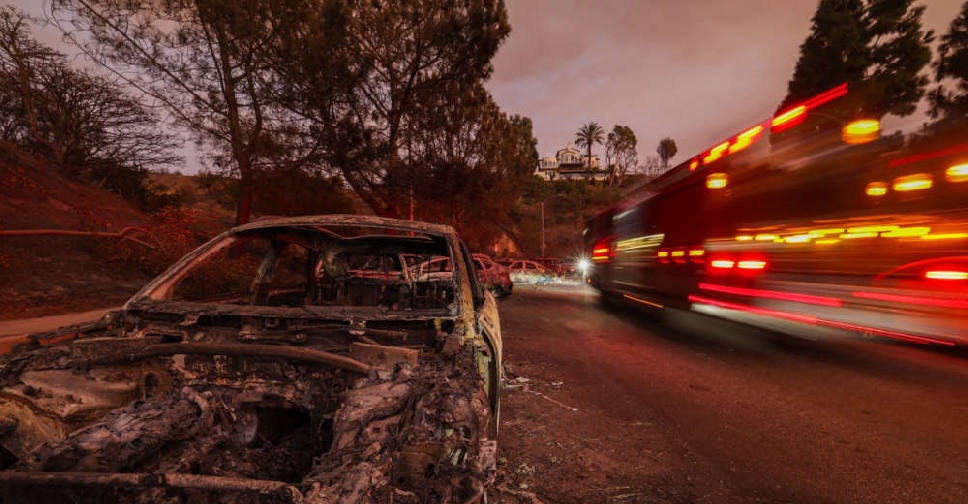
Burning Man organisers reopened the road leading out of the remote Nevada desert festival on Monday, allowing tens of thousands of attendees to escape after they had been trapped for days by mud.
But many of the 64,000 people who remained on site as of Monday may choose to stay one more night and watch the festival's giant namesake effigy go up in flames on Monday night, one day past schedule.
Unexpected summer rain turned the weeklong, annual counterculture arts festival into a muddy nightmare.
When the road finally reopened, a long line of vehicles snaked through the desert, inching along in an epic traffic jam as event organizers urged drivers to take it slowly on Monday and consider delaying their departure until Tuesday to reduce traffic.
Eventually, the traffic formed into an organized exodus 10 lanes wide, an armada of recreational vehicles and cars seeking the promised land of a hot shower and a clean bed.
The way out is a 8-km dirt road to the nearest highway. The Burning Man Traffic account on social media platform X estimated "exodus" travel time at 5-1/2 hours.
The site in Nevada's Black Rock Desert sits atop the former Lake Lahontan, which the US Geological Society describes as a deep lake that existed as recently as 15,000 years ago. It is about 25 km from the nearest town and 177 km north of Reno.
For days, up to 70,000 people were ordered to stay put and conserve food and water as officials closed the roads, requiring vehicles to stay put.
"People are taking care of each other. We have food. We have provisions. We have shelter. So it's really kind of a group effort to get through this," said attendee David Date.
One person died at the event, officials said on Sunday, providing few details. An investigation was under way.
"It really looked apocalyptic," said festival volunteer Evi Airy. "When you see the people walking barefoot in such a cold with the children. Some people have a small child here like three years old, four years old. I don't know how they survived."
Even before the gate was officially open, campers started leaving while it was still dark. Stuck vehicles littered the roads in the makeshift Black Rock City that springs up for the festival, some of them horizontally blocking lanes roads because they had lost control.
The desert path to the main gate was a graveyard of marooned cars, which will challenge the event's ethos of "leave no trace" of human activity in the desert.
At one point event workers gave instructions on how to traverse a "river" created by the rain, placing cones on an arc with instructions to take the bend at 30 kph, a course that still bathed vehicles in mud. But just past that final obstacle lay the gravel road toward civilisation.
The temporary airport serving the festival was reopened earlier on Monday.
Every year Burning Man brings tens of thousands of people to the Nevada desert to dance, make art and enjoy being part of a self-sufficient, temporary community of like-minded spirits. Originating in 1986 as a small gathering on a San Francisco beach, the week-long festival is now attended by celebrities and social media influencers. A regular ticket costs $575.
The festival typically has a penultimate night send-off with the burning of a giant wooden effigy of a man, along with a fireworks show. Originally set for Sunday night, it was rescheduled for Monday night at 9:00 pm PDT (0400 GMT on Tuesday), organisers said.



 'Twin Peaks' creator and filmmaker David Lynch dies at 78
'Twin Peaks' creator and filmmaker David Lynch dies at 78
 Bollywood star Saif Ali Khan stabbed at Mumbai home
Bollywood star Saif Ali Khan stabbed at Mumbai home
 Papal thriller 'Conclave' leads BAFTA nominations
Papal thriller 'Conclave' leads BAFTA nominations
 Hollywood celebrities clear their closets for fire aid
Hollywood celebrities clear their closets for fire aid


